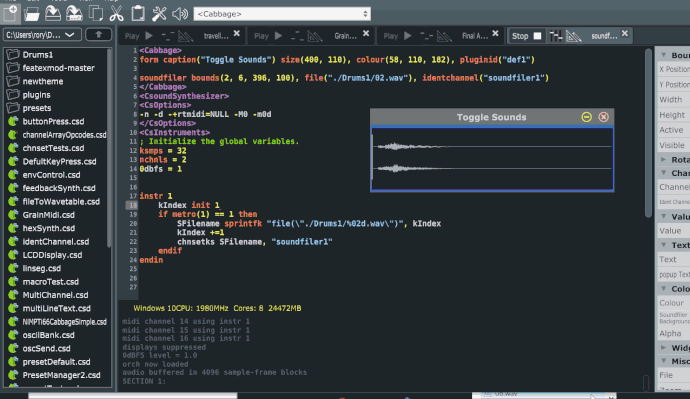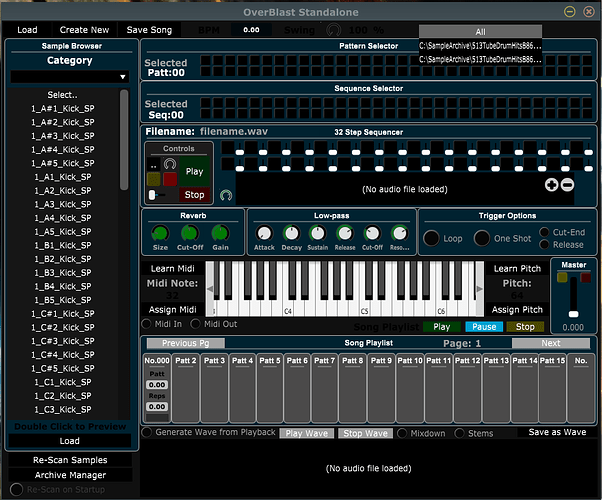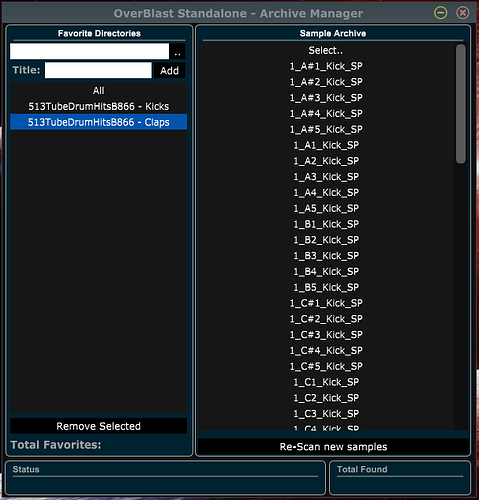Hello everyone
I am working on a 32 step sequencer. I have been working on the ui over the past few days and I feel like I am coming to a standstill I have knowledge of other programming languages but since I am new to csound I have little to know clue on the proper syntax to be using when it comes to the basic like reading and writting to txt or xml files. Or even changing the nth index in a widget array such as a file location for soundfiler. Also adding or removing nth line to a listbox could help.
I was able to go through the tutorials provided on the cabbage audio website but I noticed they dont really cover setting and getting information from multipule widgets such as soundfiler. So far I have been able to load only 1 file location and successfully display the waveform inside the soundfiler display Im having trouble iterating through and setting all 64 file locations.
I followed the basic instructions on creating multiple objects using widgets So now I have 64 soundfiler objects overlapping each other in my patch.
How would I make only the selected index visible programmatically not by manually selecting the visibility check box in the properties.
Again I don’t know how to set the nth index of the soundfiler filename depending on which index is selected if that makes sense.
Any help is much appreciated



 All in a widget array. That’s certainly one way to try it. It might be easier however to simply create one soundfiler, and dynamically load what samples you want to it. For example, here I step through each sample in a directory and update the
All in a widget array. That’s certainly one way to try it. It might be easier however to simply create one soundfiler, and dynamically load what samples you want to it. For example, here I step through each sample in a directory and update the 





